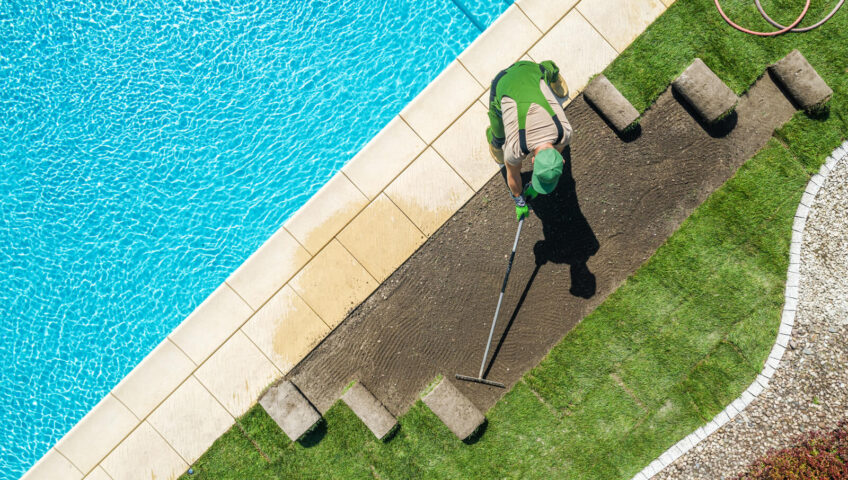When it comes to crafting the perfect backyard oasis, few additions can rival the beauty and functionality of a swimming pool. Building a pool, however, requires careful planning and execution to ensure it fits both your lifestyle and your home’s aesthetics. Below, we’ll explore the key steps involved in pool construction and offer valuable insights to help you create your dream pool.
1. Planning and Design
The first step in pool construction is defining your vision. Decide on the type of pool you want — whether it’s an above-ground or in-ground pool, infinity edges, or lap pool. Think about the shape, size, and location of your pool, taking into consideration factors like your yard’s terrain, sun exposure, and proximity to your home. Working with a professional designer or architect can help bring your ideas to life.
2. Obtaining Permits
Building a pool requires adhering to local building codes and regulations. Before breaking ground, you’ll need to secure the necessary permits for excavation and construction. Ensure you’re familiar with any zoning laws, fencing requirements, or safety regulations in your area. Hiring a knowledgeable contractor can simplify this often complex process.
3. Excavation and Framework
Once the permits are secured, the next stage is excavation. Heavy machinery is used to dig out the selected area based on the pool’s design. Then, the framework for the pool is established, typically using reinforced steel rebar to create the pool’s shape and enhance structural integrity.
4. Plumbing and Electrical Systems
Proper plumbing and electrical systems are crucial to ensure the pool is functional. Pipes are installed to manage water circulation, filtration, and drainage. At the same time, electric wiring is embedded for features like lighting, pumps, or heating systems. This step demands precision to avoid future maintenance issues.
5. Pool Shell and Finishing
Next, the pool’s shell is created. For in-ground pools, this might involve spraying concrete or applying a fiberglass mold. Once the shell is cured, tiling, plaster, or other finishing materials are added to enhance aesthetics and provide a smooth surface. This is also when additional features, like waterfalls or mosaics, can be installed.
6. Decking and Landscaping
To complete the look, add the surrounding decking and landscaping. Whether you prefer natural stone, wood, or concrete, the decking enhances the visual appeal and functionality of the area. Complement this with greenery, outdoor furniture, or even a pergola to create a welcoming atmosphere.
Final Thoughts
Building a pool is a rewarding endeavor that adds both lifestyle value and property worth. By understanding the construction process and partnering with skilled professionals, you can ensure every detail is tailored to match your vision. With the right design and features, your pool can become the ultimate centerpiece for relaxation and entertainment.


This guide has been incredibly helpful! I’m planning to start my pool construction next month and now I feel much more prepared. Do you have any tips for maintaining the pool after it’s completed?
Thank you for your kind words! We’re glad you found the guide helpful. For pool maintenance, regular cleaning is key—skimming the surface, vacuuming the bottom, and brushing the walls will prevent algae buildup and debris accumulation. Maintaining the right chemical balance in the water is also crucial. Test the water weekly to ensure proper pH and chlorine levels. Investing in a pool cover can also help reduce debris and evaporation. Happy swimming!
“Landscaping is an art that blends nature with creativity!” Delbers Landscaping Rock Services San Pablo CA
Great post! This comprehensive guide to pool construction provides all the essential details, from planning and design to selecting materials and handling permits. It breaks down the entire process, making it easier to understand the steps involved in building your dream pool. With expert advice and practical tips, this guide ensures that your pool construction journey is smooth, efficient, and successful.
Warm lighting creates a cozy and inviting atmosphere.Delbers Landscaping Outdoor Light Services San Pablo CA
Smart lighting systems make home automation more convenient.
Delbers Landscaping Outdoor Light Services San Pablo CA
Thank you for creating this excellent information! The sections on soil testing and site evaluation were particularly noteworthy since they set the foundation for a long-lasting pool. I particularly appreciated how you discussed the benefits and drawbacks of various pool finishes and materials, as well as the specific procedures from excavation to plumbing and safety checks. Visualizing what occurs at each step is greatly aided by the pictures and illustrations. When I’m organizing my own pool project, I will absolutely refer back to this — and I’ll also be sure to connect with a trusted pool fencing company Los Angeles to complete the design safely!